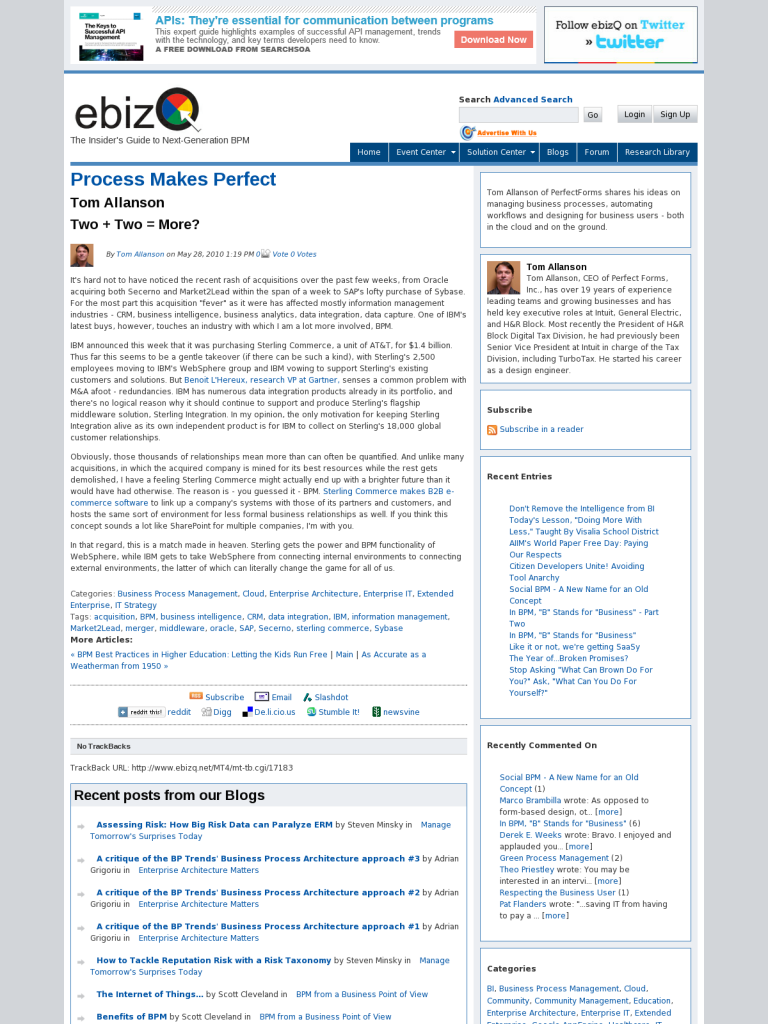Two + Two = More?
It’s hard not to have noticed the recent rash of acquisitions over the past few weeks, from Oracle acquiring both Secerno and Market2Lead within the span of a week to SAP’s lofty purchase of Sybase. For the most part this acquisition “fever” as it were has affected mostly information management industries – CRM, business intelligence, business analytics, data integration, data capture. One of IBM’s latest buys, however, touches an industry with which I am a lot more involved, BPM.
IBM announced this week that it was purchasing Sterling Commerce, a unit of AT&T, for $1.4 billion. Thus far this seems to be a gentle takeover (if there can be such a kind), with Sterling’s 2,500 employees moving to IBM’s WebSphere group and IBM vowing to support Sterling’s existing customers and solutions. But Benoit L’Hereux, research VP at Gartner, senses a common problem with M&A afoot – redundancies. IBM has numerous data integration products already in its portfolio, and there’s no logical reason why it should continue to support and produce Sterling’s flagship middleware solution, Sterling Integration. In my opinion, the only motivation for keeping Sterling Integration alive as its own independent product is for IBM to collect on Sterling’s 18,000 global customer relationships.
Obviously, those thousands of relationships mean more than can often be quantified. And unlike many acquisitions, in which the acquired company is mined for its best resources while the rest gets demolished, I have a feeling Sterling Commerce might actually end up with a brighter future than it would have had otherwise. The reason is – you guessed it – BPM. Sterling Commerce makes B2B e-commerce software to link up a company’s systems with those of its partners and customers, and hosts the same sort of environment for less formal business relationships as well. If you think this concept sounds a lot like SharePoint for multiple companies, I’m with you.
In that regard, this is a match made in heaven. Sterling gets the power and BPM functionality of WebSphere, while IBM gets to take WebSphere from connecting internal environments to connecting external environments, the latter of which can literally change the game for all of us.
Leave a Comment
You must be logged in to post a comment.








